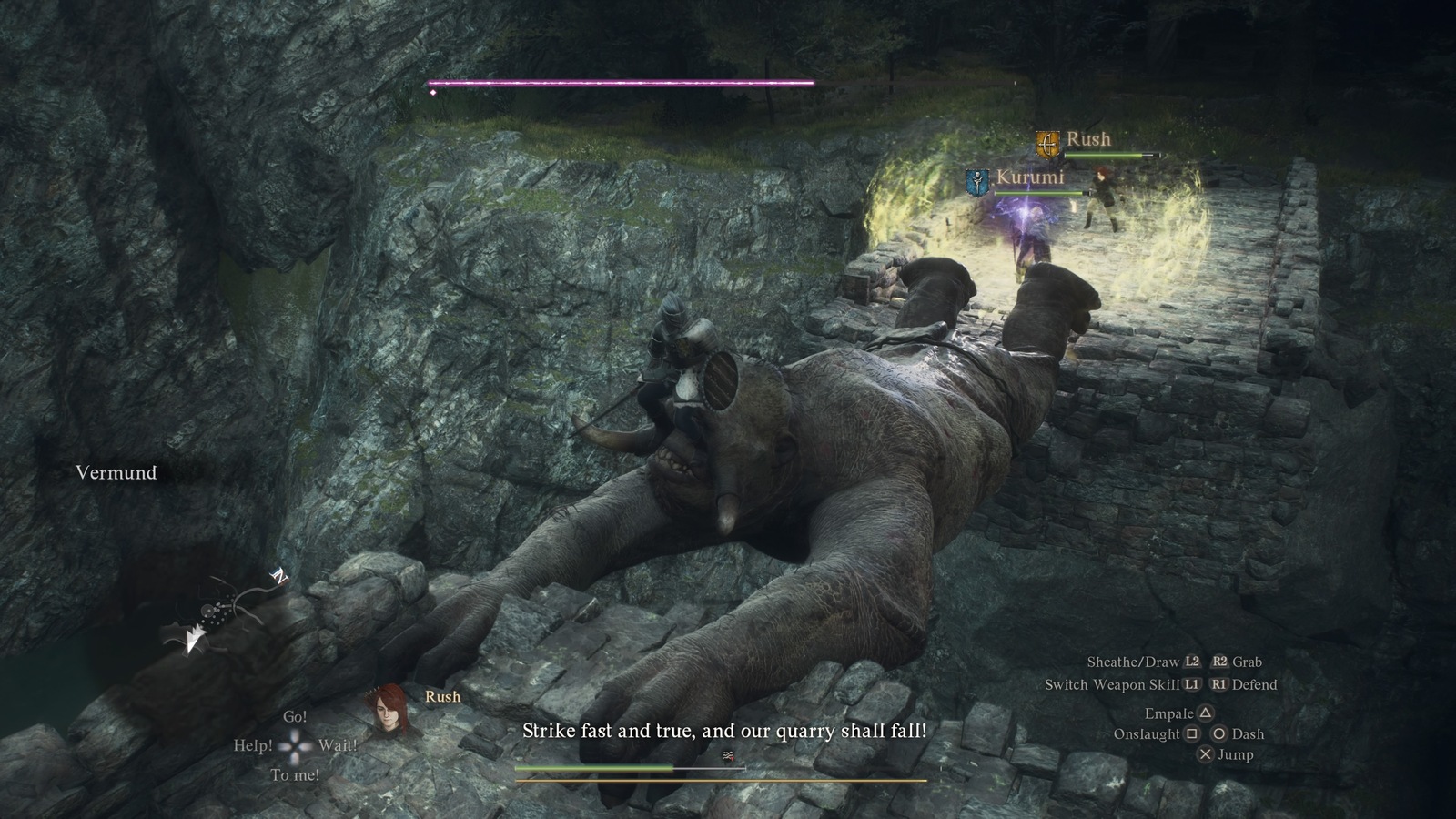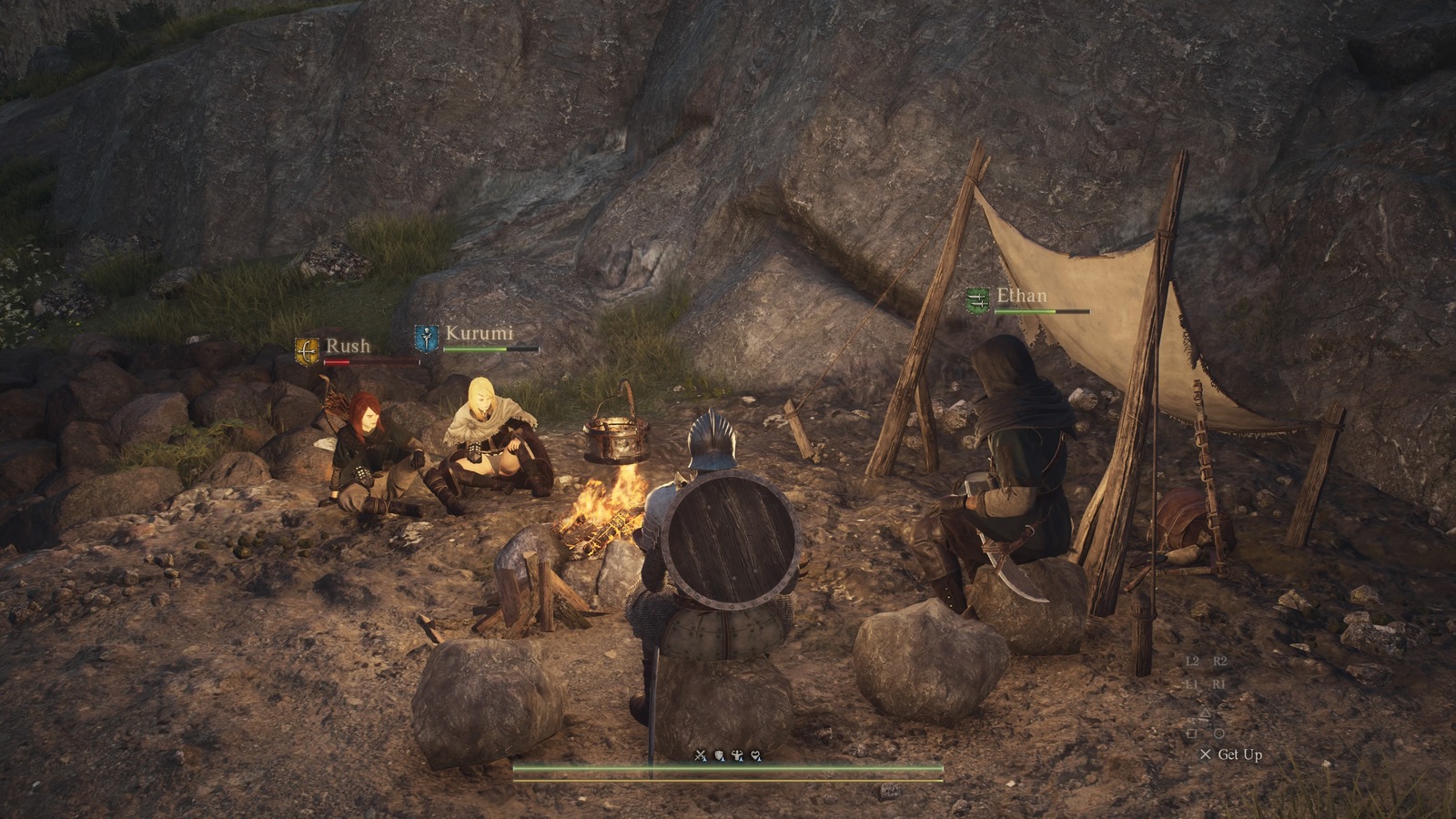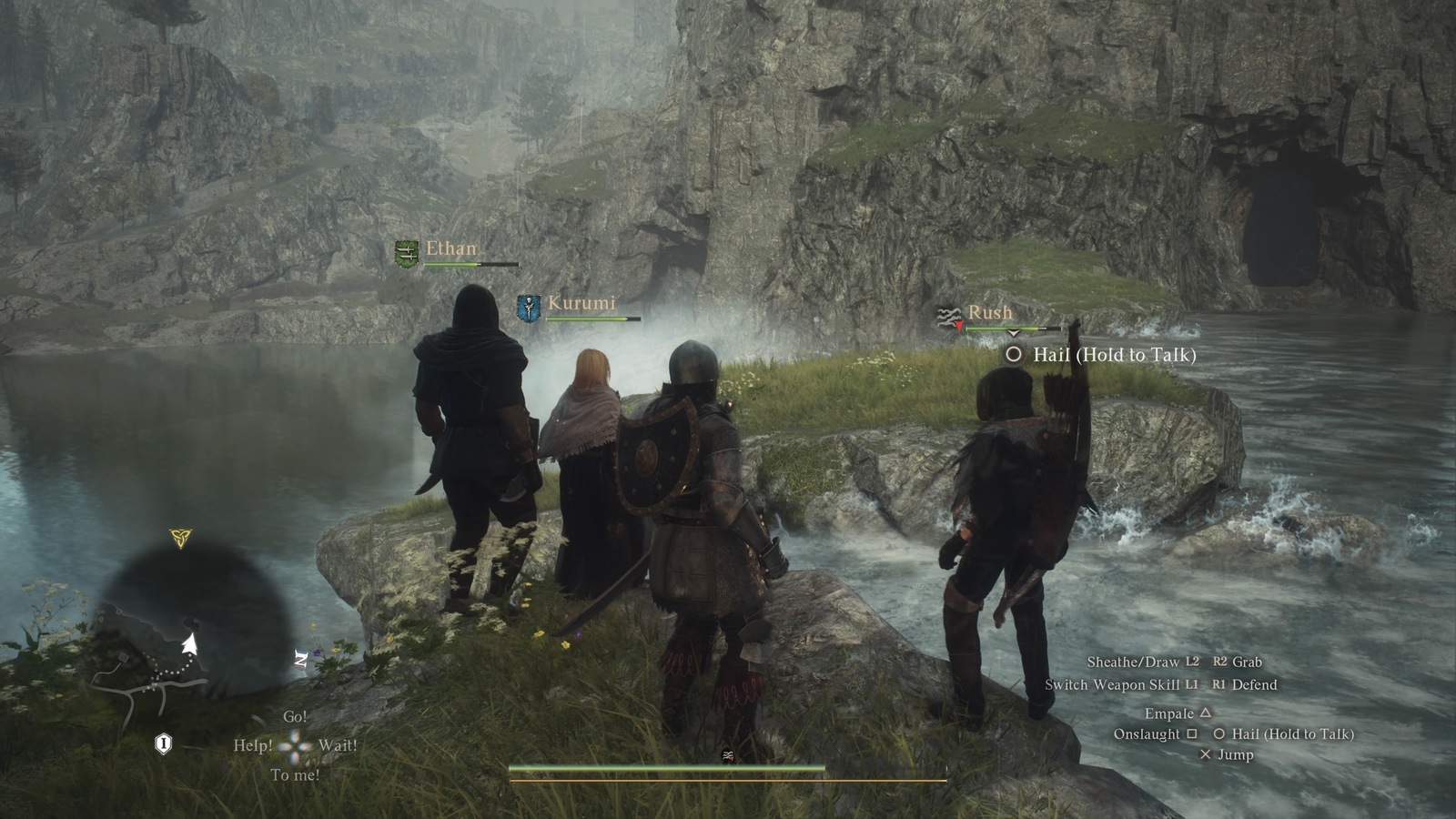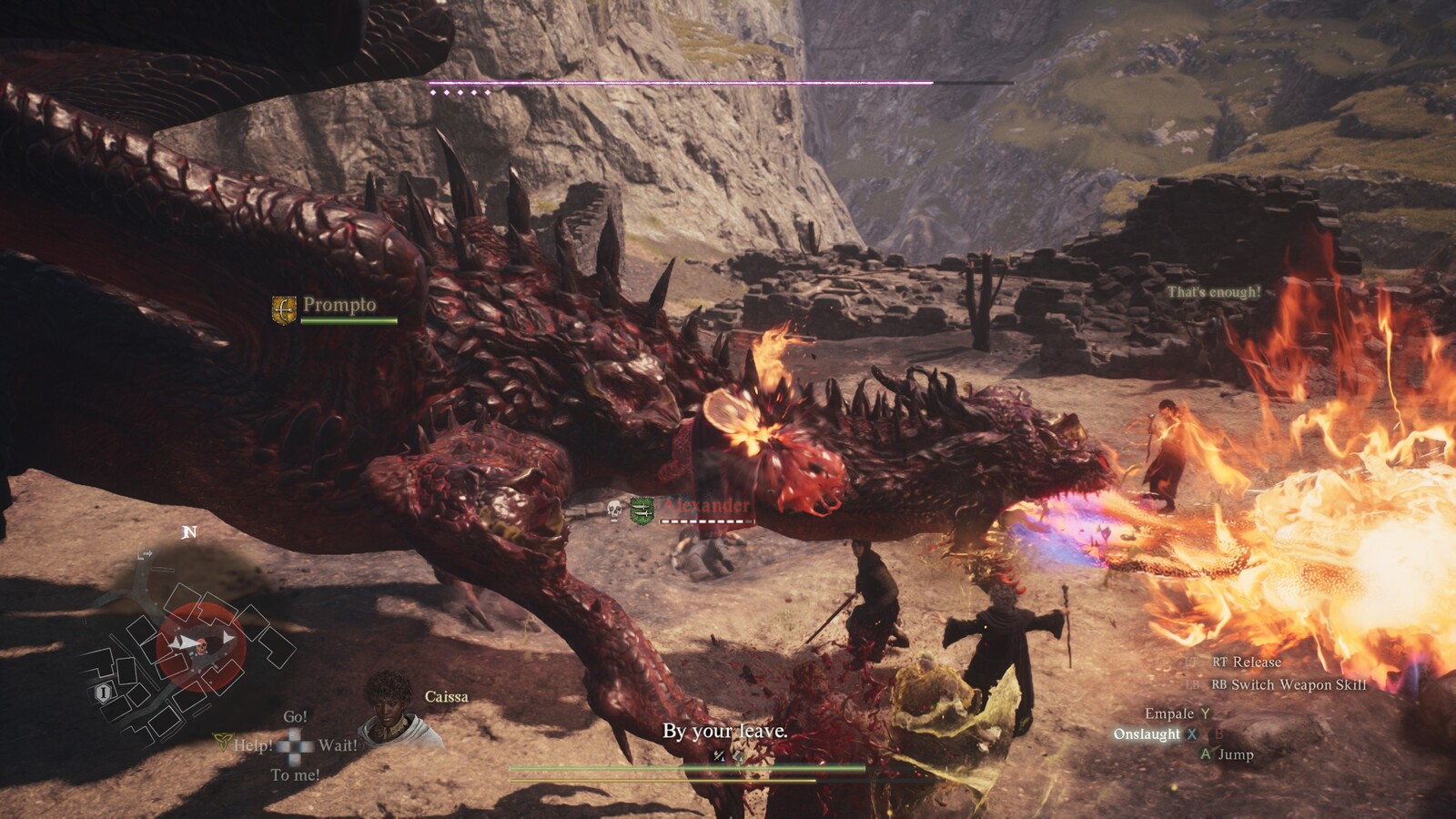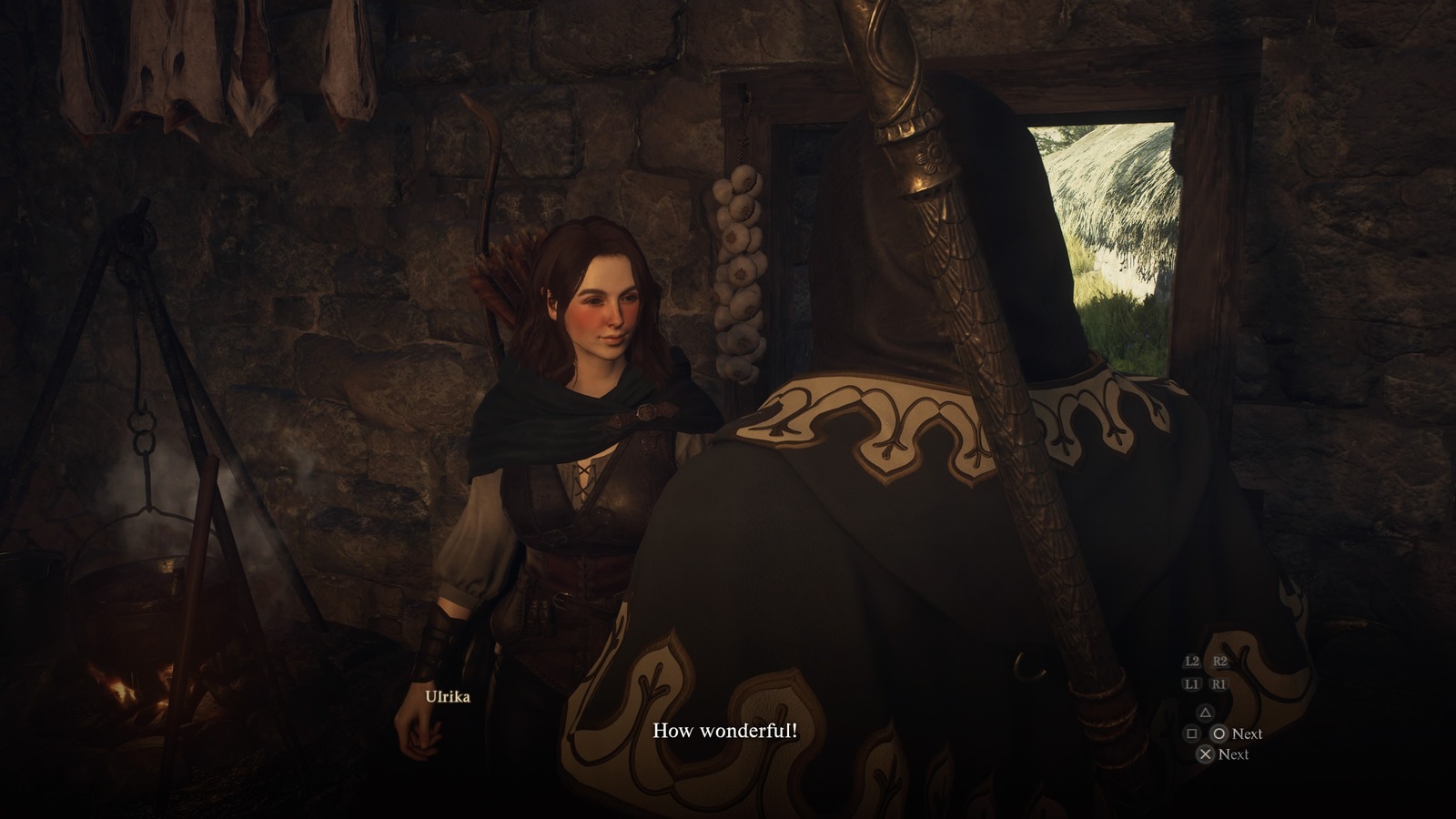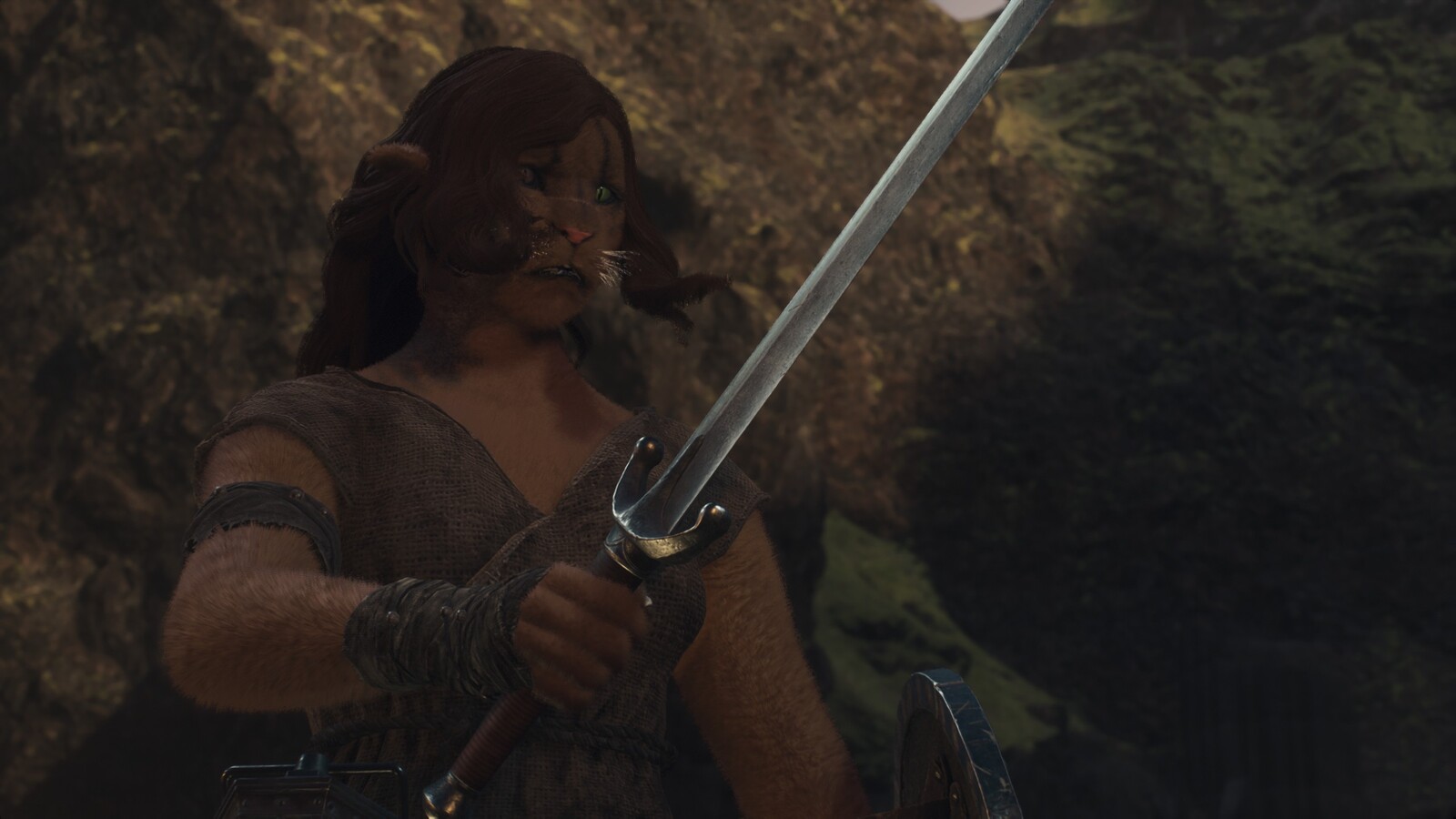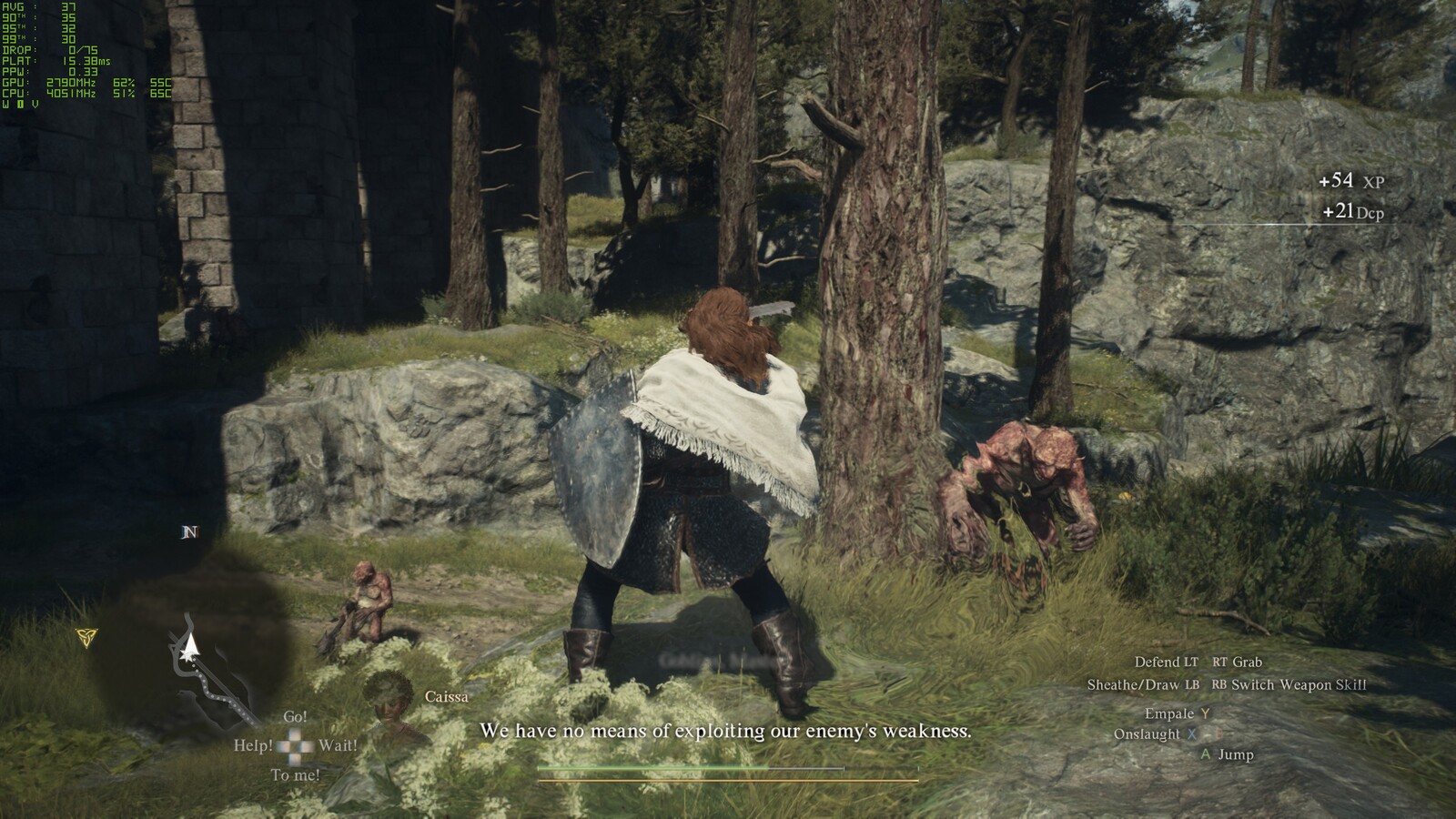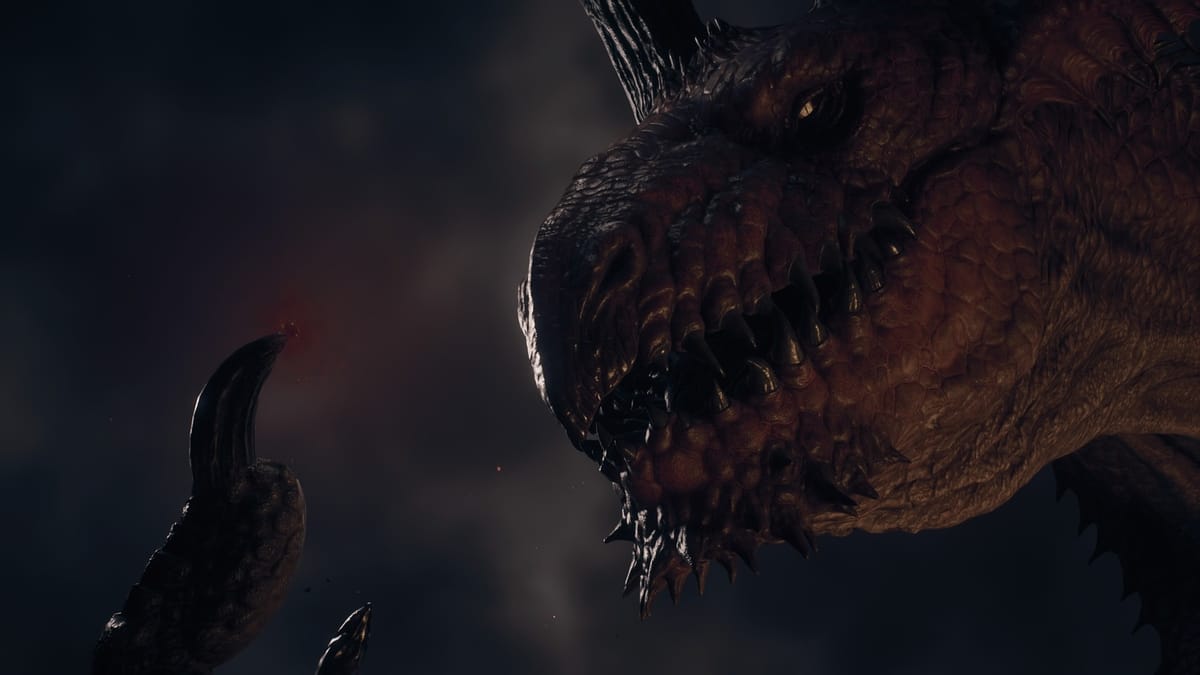
Jack:
As a kid, video games felt infinite. I didn’t know how they were made and I didn’t have access to the internet to find out. This lack of information created a wonderful illusion: I could finish a game and generally know what was in it, but I could never really know about everything in it. Video games remained vast long after their endings. When revisiting my favorites, I’d be drawn in by the familiar parts I loved while being pushed forward by a vague sense that there was still more to discover, even if there wasn’t. This sensation allowed each game I played to transcend their technical boundaries and become real – they were in every way just as big and unknowable as our own world.
Today, I know everything about everything, so video games suck. I can spot their artificial limits and budget constraints from a mile away. The illusion broken and the magic gone, I’ve come to accept the limits of fictional worlds. Nothing I play can recapture those old childhood feelings, so instead I appreciate them more like an “adult,” whatever that means. Dragon’s Dogma II understands this dilemma completely, and capitalizes on it. Dragon’s Dogma II’s open world and RPG mechanics have definite limits, yet it evokes the grand scale of the games in my memories in spite (or perhaps because) of them.
Dragon’s Dogma II is the kind of sequel where the dragon lies in the details. The world is new and the graphics have received a huge upgrade of course, but there are still many moments where the game feels like an enhanced version of the first game. If you’re familiar with the original Dragon’s Dogma, you’ve seen the goblins, many of the vocations, the general vibe of the world and its habitants, and its greater plot before. Even if you haven’t played the original, one look at the game’s fantasy setting will likely paint an accurate picture of what to expect. Between the pockets of the familiar, however, you’ll constantly find little surprises: you’ll interact with enemies in odd ways, use abilities you couldn’t have imagined, form connections with people you didn’t expect, and discover freedom in seemingly straightforward scenarios. Ingenuity forges the experience into a worthy sequel.
Take the vocations, for example. Vocations function as your class, and while the sequel’s selection covers a lot of the same territory as the original game, the choices have all been reworked. Far less crossover exists between any individual vocation, making each one easier to understand while also providing them with a stronger identity. I swapped between four different vocations throughout my playthrough, and each time I hesitated to do so because I was having so much fun with the current one. The way vocations have been rethought brings their unique strengths and combat potential to the forefront.
The emphasis on vocation distinction becomes especially apparent in brand new ones like Mystic Spearhand and Trickster. Mystic Spearhand combines the strengths of physical attacks and magic, but avoids retreading any vocations that cover similar ground by emphasizing the spear weapon unique to this vocation. Combining the Mystic Spearhand’s mobility with its surprisingly strong magic barrier ability creates an offensive juggernaut that has little reason to stop attacking outside of refreshing its defenses. Pretty overpowered! Trickster on the other hand doesn’t resemble anything else in the game at all. As a Trickster you run around creating illusions and traps for enemies, encouraging you to be creative in your approach.
Each vocation offers enough distinct options that I wanted to try them all – luckily Dragon’s Dogma II encourages that by reworking stat increases while leveling up. Previously vocations would directly affect your stat growth, making it so that even if you were to change your vocation, you would be hampering yourself greatly by going from a Mage to a Fighter. In the sequel, you can freely swap between vocations without needing to worry about how it will affect your stats. Your stats now automatically adjust based on your vocation, opening the door wide open for you to try whatever you want without worry. While this does effectively invalidate the fun of creating your own build, I think overall it’s the right call for a game that lets you explore everything else freely.
This change carries over to your Pawn as well, your beloved, customizable buddy who follows you and makes adorably dumb comments. Dragon’s Dogma takes a more party-focused approach to combat in that the pawns you bring with you often matter more than your personal combat prowess. While the Pawn system remains largely the same as it was in the original game, some interesting twists breathe new life into the concept.
Outside of your main pawn, you’ve always been able to recruit pawns from other players (or the CapCops themselves) and those choices matter beyond just the particular vocations you want. All pawns now have greater utility available through specializations. Some pawns will automatically craft items for you out of whatever they happen to pick up while others can speak elvish. If you’re stuck, it’s exceedingly likely that the right pawn will have information about how to complete a quest and will even guide you where you need to go. This feature saved me more than a few times during the pre-release period, even if it resulted in some long treks across the map with no idea where I was headed. The pawns you use won’t always be exclusively helpful, either; they’ll constantly warn you about a rare disease they can catch that will make them disobedient and unhelpful – the only way to tell is by paying close attention to them.
Pawns by their nature have always come across as lifeless. That lack of personality gave them an endearing sort of charm in the original game; their unwavering loyalty combined with their odd, repetitive dialogue gave the concept an enjoyable level of absurdity. Dragon’s Dogma II retains the core appeal of Pawns while giving them much greater individuality and purpose in the world. I grew attached to the random Pawns in ways that I didn’t in the first game. Simply giving your Pawn a high five after finishing a tough battle adds a lot to the overall experience, so I’d say the changes to the system were a huge success.
You’ll want to pick your Pawns wisely because you have a long, arduous journey ahead of you. Dragon’s Dogma II features a large open world map that you’re free to explore pretty much however you want, or at least as much as you’re capable of. The world itself conveys a stronger sense of place than most open worlds do. It’s not just some blank canvas of quest markers that you blow through like it’s a second job. Where you decide to go and how you choose to get there matters due to the time investment required and the danger involved. Rather than a second job, exploring the world of Dragon’s Dogma feels more like a second life.
And if we’re being honest, life is pretty inconvenient. So is Dragon’s Dogma II. You can’t just fast travel wherever you want, you need to pace yourself in line with a stamina meter, and you’ll be punished for journeying too long without camping or staying at an inn. While the game may be convenient, however, it is not malicious. If anything, Dragon’s Dogma II is far more convenient than its predecessor – a lot of small touches like being able to switch your skills at camps make the experience ever so slightly more inviting. The inconvenience exists to force you to engage with the world around you.
That engagement reveals the true appeal of Dragon’s Dogma: it’s a world where you need to appreciate how large it is by physically traversing it, respect the dangers it poses by proceeding cautiously, and enjoy its secrets by discovering all of the little nuances contained within it on your own. This game shines when you approach it on its own terms. Dragon’s Dogma II risks its mainstream appeal on this gamble and it pays off spectacularly. A lot of games do open worlds these days yet few lean on the sense of realism that inconvenience adds. Dragon’s Dogma II foregoes the trends to create a truly engrossing world to explore.
Admittedly, that’s largely the appeal of the original Dragon’s Dogma as well. My first dozen or so hours with the game disappointed me a little in just how similar things appeared to be. At times it felt like I was playing an extremely polished remake of a game I loved, constant assaults by wolves and all. That’s still a great time, but not quite what I was hoping for twelve years out from the original. You don’t need to reveal everything upfront, of course, I just felt like my expectations were not fully met until much later into the game. I suppose anyone who truly loves Dragon’s Dogma would be more than willing to stick around that long anyway!
The further you explore the world of Dragon’s Dogma II, the more it becomes apparent that this is a much fuller realization of the game that the original wanted to be. The map is huge and you don’t need to visit most of it. Many of the locations focus on new types of locales and even different races of characters, bringing the world to life in a fresh way.
I was particularly impressed by how Dragon’s Dogma utilizes its quest design to further draw you into its depths. Quests often lead into each other or involve the large cast of NPCs more deeply than you may initially think. Even if the individual stories aren’t noteworthy on their own, they usually connect to a larger story.
The game mechanics themselves frequently come into play during quests in unexpected ways. There are often multiple creative solutions to the same problems if you’re willing to think about your toolset holistically. This is a game where you’re constantly rewarded for paying attention to the details. The way that the quests interweave with both their narratives and the game mechanics plants them more deeply into your mind, making them surprisingly memorable.
Dragon’s Dogma II lives for memorable moments, which is further emphasized by one of my favorite new touches. Any seasoned gamer has been there: some random NPC walks up to you and tells you that their loved one has been attacked by monsters or something. Sounds bad, but you really need to get some shopping done, so you’ll get to it maybe forty hours from now. If you take that approach in this game, however, you’ll find that the person you meant to save died sometime within that forty hour shopping spree. Many quests are now timed, giving them a sense of urgency. Time passes even if you don’t specifically have a quest: one of my favorite moments of the game involved going to a cave where a guard tells you a party went in before you but they’re taking a while.I ignored the cave and explored a nearby house instead. I spent so long over there that I began to hear panicked shouts for help from the cave!
All of these little nuances build up over time. Everything you experience in Dragon’s Dogma II feeds back into itself, rewarding those willing to make those connections. It’s not a completely perfect realization of what the original game was going for, the framerate on PS5 suffers some dips and NPC pop-in can be distracting, but it’s close enough. Dragon’s Dogma II feels real despite its limitations, which is perhaps the greatest compliment I can give a game as an adult.
David:
It took 12 years to finally see a followup to Dragon’s Dogma, but somehow it feels worth the wait. Dragon’s Dogma II is uncompromising on its vision of an immersive fantasy world. Quest markers to follow around its open world are fairly rare, fast travel is hard to come by, and fall damage WILL kill you more often than not. All this friction makes the world feel real and dangerous. Even with those heights, however, it still suffers from some odd storytelling and a terrible PC port.
Let’s get the bad out of the way first, namely performance. Even playing the game on my NVIDIA RTX 4070, I’m getting maybe 40 frames per second maximum. That dips down below 20 in the game’s main town, Vermund. It doesn’t matter if I have graphics settings at maximum or minimum, 1440p or 720p, that range does not change. Looking at task manager, the game is only using about 30% of my computer’s power at any given time. And don’t even think about running the game on Steam Deck because it will crash after a few seconds. Dragon’s Dogma II is horribly optimized, and I can only hope a patch will improve this in the future because the game is so dang fun otherwise.
Starting Dragon’s Dogma II is instantly familiar for anyone who played the first game. While there’s sadly no Into Free to hype you up, after a short intro you’ll be fighting griffons, goblins, and cyclops in no time. There are four Vocations to start with this time, Fighter, Archer, Thief, and Mage, and I went with Fighter and my main pawn as a Mage. You also have two races to choose from when creating both characters: Humans and Beastren. I played as a Beastren and my main pawn was Human, though this choice is inconsequential aside from some dialogue from NPCs, at least as far as I noticed. Basically, humans in Vermund will treat you coldly off the bat as a Beastren, while the cat people in Bakbattal will be nicer to you. I was hoping there would be a bit more depth to your choice of race here, but what really matters is your vocation.
As a Fighter, I wielded a sword and shield. Pressing X will perform your light attack combo, while your heavy attack on Y works a bit differently than the original. It’s slower and deals more damage, yes, but it’s best used when an enemy is knocked down or off balance for a devastating critical hit that will usually kill smaller enemies and hit for most of a health bar on boss monsters. It’s incredibly satisfying thanks to some great animations and sound effects. So much so that once I maxed out Fighter I was a bit sad to switch to another Vocation, but there are some incredibly cool ones out there to unlock, such as Mystic Spearhand and Trickster, and every Vocation has the same amount of love and detail poured into it.
Of course, there are more ways to defeat your foes than just hitting them. One of my favorite encounters in the game was with a cyclops just in front of a deep ravine. My party knocked the enemy off balance and into the gap, where we then used it as a bridge then knocked it down for an instant kill. Early on, you can even blow up a natural dam to deal some major damage to a minotaur attacking your caravan in the river. Getting creative can often mean the difference between an encounter that will require you to camp early for the day or coming out unscathed. There’s no wrong way to play, and using your environment to your advantage is a ton of fun.
Combat is a highlight of Dragon’s Dogma II, but it’s not the only thing. While NPCs are pretty shallow, there are a few you’ll get to know through quests such as Ulrika and Daphne. Giving gifts to any NPC will increase their affinity for you, and once it’s high enough they may start giving gifts back. For example, I frequently gave flowers to the orphan Daphne whenever I stopped by the slums of Vermund (unfortunately you cannot adopt her even though my house has room), and eventually she gave me a scroll that gave my pawn the Forager specialization, which marked any material gathering spots on my map. I do wish NPCs had more depth to them, but checking in on some occasionally will yield great results.
Your choices throughout the game will also affect the lives of characters. For example, a side quest early on in the game asks you to follow a suspicious beggar who seems fairly well off despite not making much gold. Tailing him to his house after dark will reveal his terrible secret, and you can deliver the evidence to one of two NPCs. The character I chose ended up with both her and the beggar dying in a murder suicide. Trying to do the right thing won’t always lead to a positive outcome, which makes me very interested in seeing the other side in new game plus or another playthrough. Unfortunately, there’s no way to start over on PC aside from manually deleting your save in file explorer, and Steam Cloud will usually foil that attempt anyway.
Dragon's Dogma 2
Excellent
Dragon’s Dogma II is a masterfully refined take on the original game. It’s easy to get lost in its massive world for hours on end and truly immerse yourself into the role of the Arisen. There are a ton of technical problems and oddities throughout the game, but somehow those didn’t stop us from having a blast. In an age where the limitations of video games are a known quantity, Dragon's Dogma II transcends them to become a game that truly feels real.
Pros
- Expertly refines the core of Dragon's Dogma
- Filled with clever details that make the world feel real
- New additions flesh out the world's true potential
Cons
- Frontloads the familiar
- Technical hurdles abound

